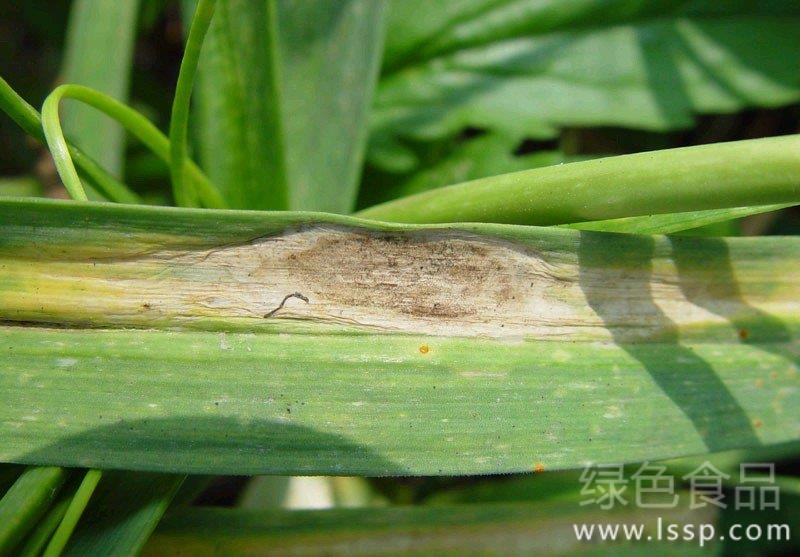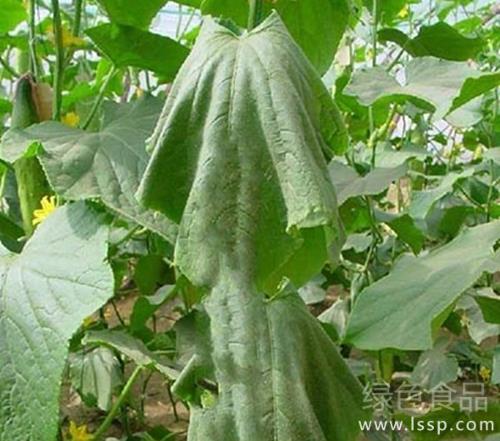Control methods of garlic leaf blight from green to brown to yellow
The benefit of precocious garlic is good, and there are many farmers planting it. However, garlic leaf blight, which is common in recent years, has become a major disease in new and old garlic areas, and the yield of serious fields has been reduced by 2030%. According to the occurrence law of garlic leaf blight, comprehensive control is the key to obtain high quality and high yield of garlic.

Garlic leaf blight
Symptoms of leaf blight:
The disease of garlic leaf blight begins from the leaf tip, then develops to the stem and leaf, and spreads upward from the bottom of garlic. Garlic leaves change from green to brown and finally to yellow. Garlic leaf blight can directly destroy chlorophyll and affect photosynthesis, resulting in a decrease in yield and poor economic benefits.
Climatic conditions of leaf blight:
There are many causes of garlic leaf blight, which are greatly affected by weather. The optimum temperature for the occurrence of garlic leaf blight is 15-20 ℃, and it is easy to be infected by heavy rain and high temperature. There are two high incidence periods of garlic leaf blight in Dali, that is, from the beginning of November to the middle of December and from the beginning of January to the end of February of the following year. The temperature of early sowing garlic field is high from August to September, which is in the peak period of precipitation, so it is easy to get sick, so it becomes the source of infection in suitable sowing garlic field. Secondly, the low-lying land, after the rice garlic field, easy to stagnant water garlic field disease serious; thin land, lack of fertility, the disease is serious. On the contrary, the garlic field with strong permeability and sufficient fertility is not easy to suffer from the disease or light.
Prevention and control measures:
Seed disinfection: before sowing, soak the garlic seeds in 50 ℃ warm water for half an hour or mix the seeds with 0.5% Dysenamine and Fumishuang.
Soil treatment: you can mix thiram and pentachloronitrobenzene at the ratio of 1:1, 500g to 750g per mu, mixed with 400x dry soil, and sprinkle the soil surface before turning the soil.
The sowing time of precocious garlic is from September to October, which is in the late rainy season, the soil is moist, easy to rot, dead seedlings and induce garlic leaf blight. Especially in rice stubble fields, it is necessary to open ditches for drainage and reduce soil moisture, which is conducive to seedling emergence and reduce diseases, insect pests and weeds.
Increase the application of agricultural fertilizer, improve soil fertility, improve disease resistance: garlic has few whiskers and weak absorptive capacity, so it needs loose and organic matter-rich soil. Promote farm manure and increase the application of phosphorus and potash fertilizer. By improving the soil fertility, the disease resistance of garlic was improved.
Chemical control: at the initial stage of the disease, 200 grams of 70% mancozeb per mu of garlic can be sprayed for 7 to 10 days and prevented again; during the peak period of the disease, 50 grams of 50% hydantoin wettable powder 1500 times liquid or Shibaoke can be used for prevention and control. Chlorothalonil, manganese zinc and other universal pesticides can also be used for prevention and control.
- Prev

Countermeasures of Cucumber shrinkage caused by shrinkage affecting yield of Cucumber in greenhouse
Countermeasures of Cucumber shrinkage caused by shrinkage affecting yield of Cucumber in greenhouse
- Next

How to water the azaleas
Watering azaleas is a very important task. Because the root system of rhododendron is relatively weak, both waterlogging and drought tolerance, too dry or too wet are disadvantageous to plant growth, so special attention should be paid to water control. If there is a lack of water during the leaf expansion period, the leaves of the azaleas will turn yellow and curl. If they dry badly, they will die. If there is a lack of water when blooming, the petals will be soft and shrivelled, the flowers will droop, the colors will not be bright, and even the flowers will wither and die. Therefore, it must be watered according to the weather, dry and wet air, water content of basin soil and so on. Watering
Related
- Fuxing push coffee new agricultural production and marketing class: lack of small-scale processing plants
- Jujube rice field leisure farm deep ploughing Yilan for five years to create a space for organic food and play
- Nongyu Farm-A trial of organic papaya for brave women with advanced technology
- Four points for attention in the prevention and control of diseases and insect pests of edible fungi
- How to add nutrient solution to Edible Fungi
- Is there any good way to control edible fungus mites?
- Open Inoculation Technology of Edible Fungi
- Is there any clever way to use fertilizer for edible fungus in winter?
- What agents are used to kill the pathogens of edible fungi in the mushroom shed?
- Rapid drying of Edible Fungi

